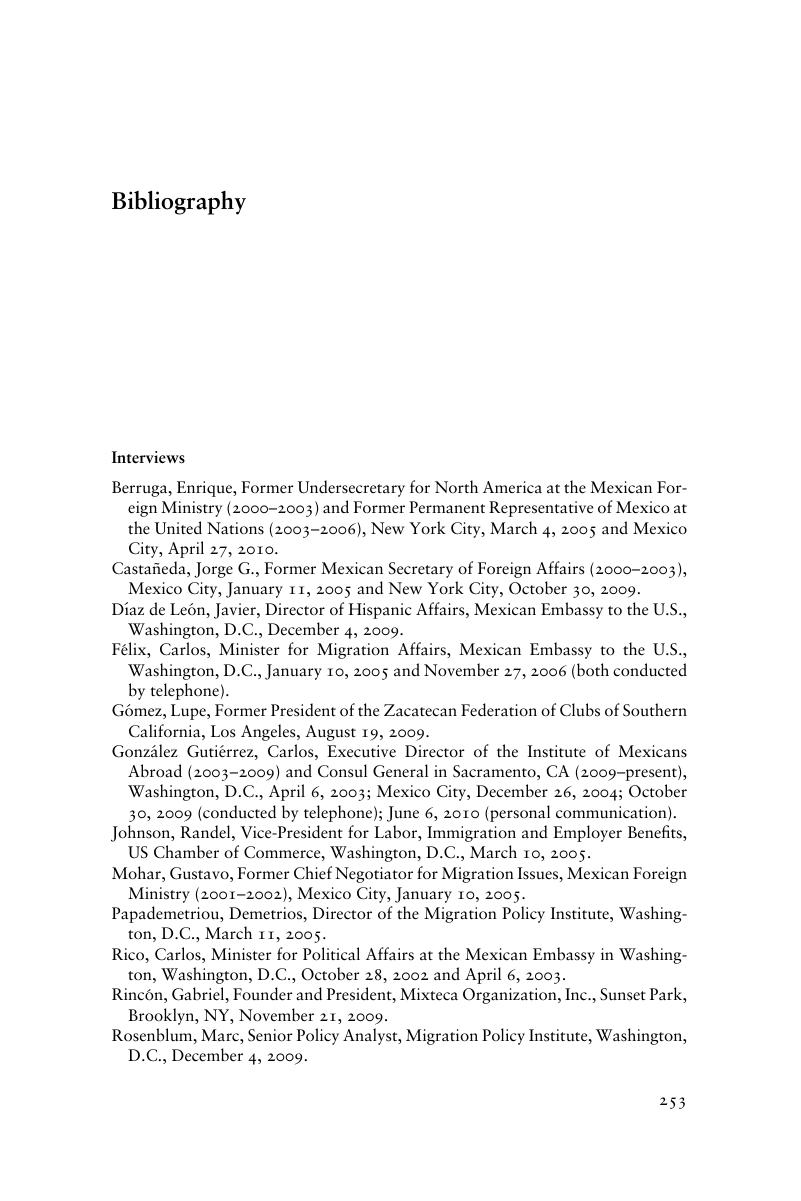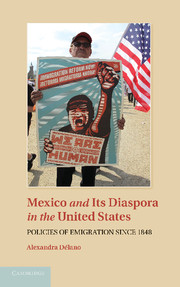Bibliography
Published online by Cambridge University Press: 05 July 2011
Summary

- Type
- Chapter
- Information
- Mexico and its Diaspora in the United StatesPolicies of Emigration since 1848, pp. 253 - 282Publisher: Cambridge University PressPrint publication year: 2011



